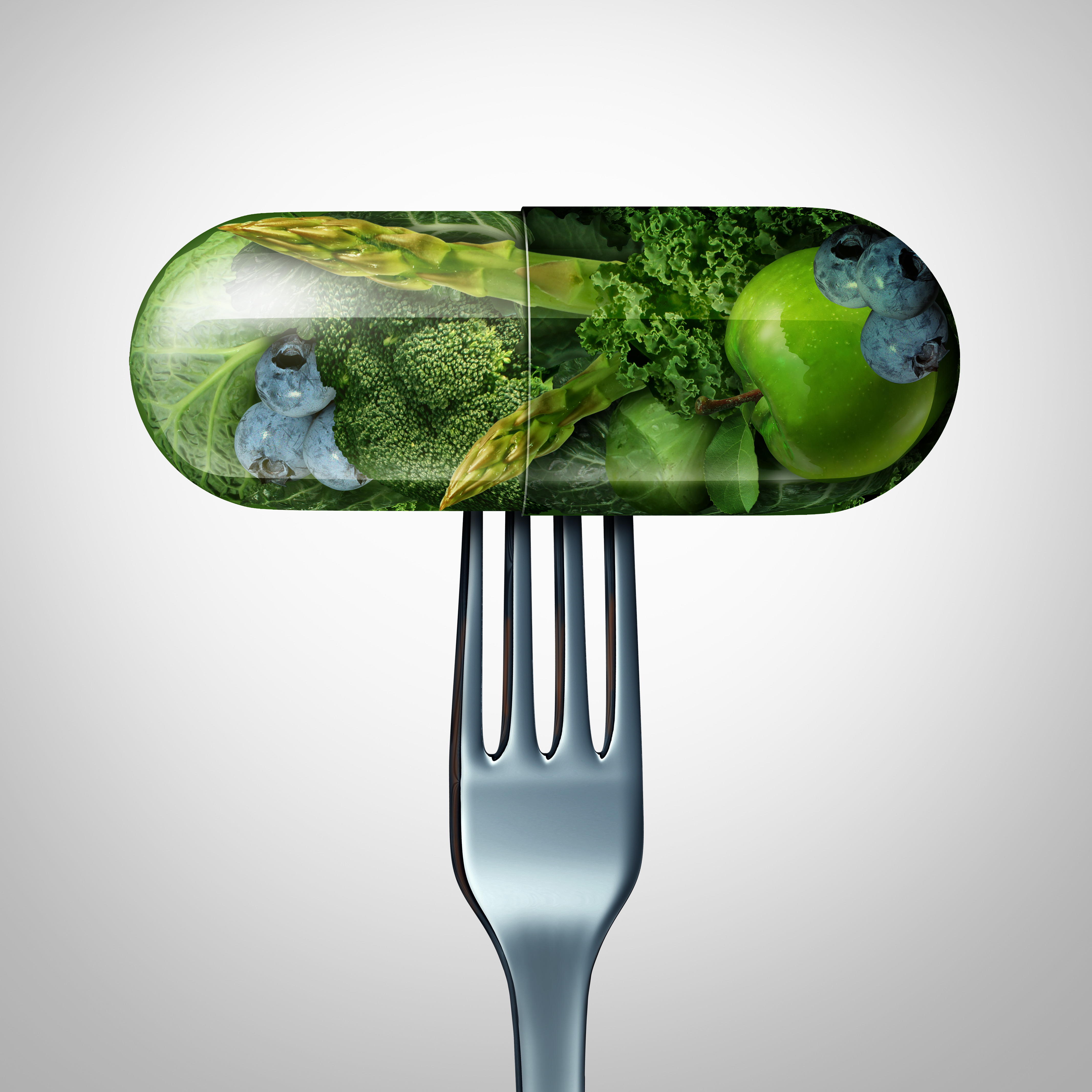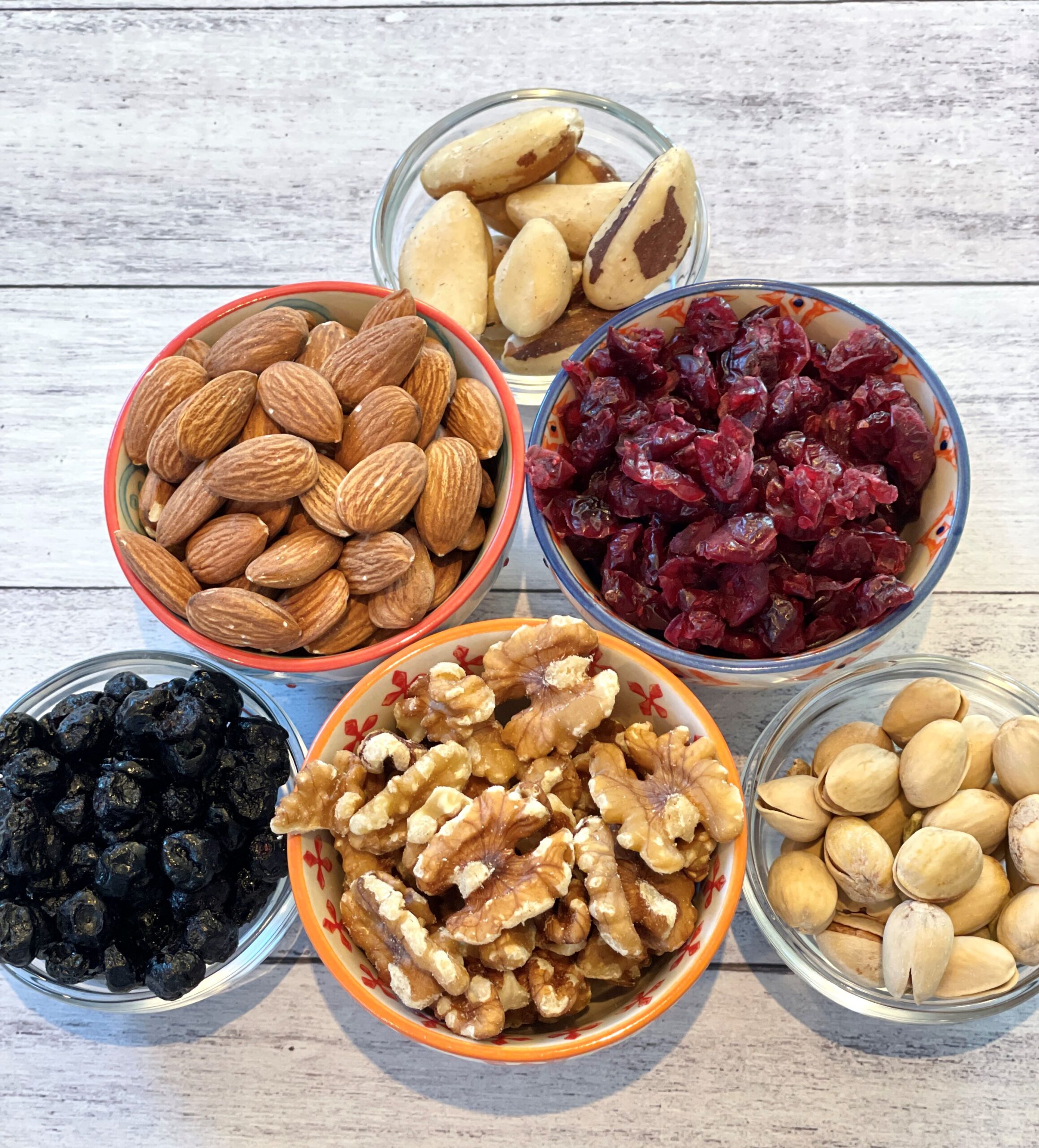What A Dietitian Recommends About Supplementation

Supplements continue to remain a hot topic due to their massive popularity in the health industry. There is a lot of confusing and overwhelming information out there. In order to reduce the confusion around the most commonly used supplements, here is What a Dietitian Recommends About Supplementation.
*Please note that everyone has different needs, so it is important to consult with a Registered Dietitian or Primary Care Physician before beginning any new health regimen. Supplementation under the guidance of a health professional will provide specific supplements and dosages needed to best suit individual situations and goals.
Most Common Supplements for the Average Healthy Person
Multivitamin
What is it?:
A multivitamin is a combination of vitamins and minerals. Manufacturers select specific amounts of each vitamin and mineral to be included in the multivitamin.8 Statistics indicate Americans will increase the frequency of supplementing with multivitamins as they age.8 Many vitamins and minerals are present in a multivitamin, such as Vitamin A, E, D, K, zinc, iron, folic acid, magnesium, calcium, selenium, etc.9 Multivitamins have been customized by age, sex, and other classifications to provide different quantities of the various nutrients.
Where is it found?:
Since a variety of vitamins and minerals are present in a multivitamin, there are a ton of natural food sources which carry these different nutrients. Consuming a well-balanced diet full of nutrient-rich foods may include the majority of vitamins and minerals found in a multivitamin supplement.
Benefit(s):
Multivitamins can benefit an individual’s health whenever further support in the diet is needed. For instance, women interested in getting pregnant will benefit from consuming certain nutrients, such as folic acid, in specific quantities, which can be found in a prenatal multivitamin.9 In addition, even though a person may eat a well-balanced diet, most people can benefit from taking a standard multivitamin to ensure adequate consumption of the basic vitamins and minerals needed on a daily basis.
Risks:
For the average, healthy person, there is minimal risk of taking a multivitamin. However, in some cases, if people are over-consuming a nutrient and taking a multivitamin, they can increase the risk receiving an excessive amount of that nutrient.8
Supplementation Recommendations:
Each manufacturer modifies the formula for multivitamins, so each multivitamin bottle is distinct regarding dosages. Speak to your healthcare provider to understand which multivitamin is right for you. The right multivitamin depends on age, gender, pregnancy, diet, and other factors that will determine the dosages necessary for one’s health goals.6 Use multivitamins as specifically directed on the label or prescribed by your doctor.
Vitamin D
What is it?:
Vitamin D is a fat-soluble vitamin that can also be synthesized by the sun.2
Where is it found?:
Fatty Fish: Fish such as salmon, sardines, mackerel, tuna, and fish oils, like cod liver oil and algae oil, are perfect for Vitamin D consumption.
Fortified foods: Fortified milk and cereal; Vitamin D and calcium are complementary to one another. Therefore, the calcium found in milk is best absorbed with Vitamin D.
Egg yolk: The fat in the egg yolk is a perfect home for Vitamin D. In fact, most vitamins found in eggs often are located in the yolk. Start the day right and spice up the morning with these quick and easy breakfast tacos with eggs!
Mushrooms: A great source of vitamin D. Because of sunlight exposure, mushrooms naturally produce Vitamin D.10 Check out our oven-roasted asparagus and squash, marinated portobello mushroom burger with fried egg, goat cheese, spinach, & caramelized red onion, or our mini cauliflower deep-dish pesto and mushroom pizza for creative ways on how to integrate mushrooms in your meals.
Sunshine: For those who live in sunny areas, shower yourself with the sun’s warmth and feel the Vitamin enter your skin’s pores. At least five to fifteen minutes of sun exposure a few times a week will help the skin produce Vitamin D. Some potential challenges regarding getting Vitamin D from the sun, is the color of one’s skin. Individuals with darker skin color may not receive enough Vitamin D from the sun because their skin cannot produce it as efficiently.7 Another challenge is the use of sunscreen.7 While sunscreen is a great way to protect the skin, it can inhibit the absorption of Vitamin D.7 Again, it’s essential to allocate a few minutes a day when the sun’s rays are not at their highest and receive sun exposure on the arms, legs, or back. Having a balance between protecting the skin and receiving adequate Vitamin D from the sun will do the body wonders.
Benefit(s):
According to research, Vitamin D regulates bone mineral metabolism, maintains an adequate amount of calcium in the body, assists in cell multiplication/growth, and maintains bone health.
Risks:
Sun exposure cannot overproduce Vitamin D, but overdosing in Vitamin D supplementation can potentially lead to toxicity.
Supplementation Recommendations:
The average recommended vitamin D supplementation is 1000 IU – 4000 IU daily.12
*Always consult with a Registered Dietitian or Primary Healthcare Physician before taking any form of supplementation.
Omega-3
What is it?:
A polyunsaturated fatty acid.11 There are three major types of omega-3’s which are EPA and DHA (marine-based) and ALA (plant-based). ALA is the most common form of omega-3 found and consumed in the diet. When it’s not converted into DHA or EPA, it’s stored and used as energy like most common fats.11 EPA and DHA are beneficial because of their connection to decreased depression.11
Where is it found?:
(DHA/EPA): Mostly found in seafood. Examples include: fatty fish like salmon, tuna, mackerel, sardines, and fish oils, such as cod liver oil and krill oil.11 Although located in the fish, DHA and EPA naturally occur in microalgae. Fish feed on microalgae and accumulate the DHA and EPA in their tissues. Algae, algal oils, chlorella, and spirulina, are also good sources of plant-based DHA and EPA.
(ALA): Mostly found in plant sources, such as plant oils (flaxseed oil, walnut oil, canola oil, or soybean oil); hemp seeds, flaxseeds, chia seeds, and walnuts. Have some fun and make some breakfast brain foods in the morning to tackle the day ahead with these omega-3s.
Benefit(s):
Eye Health: Are you spending too much time in front of a screen? Don’t worry. You’re not alone. Lucky for us, consuming omega-3s improve eye function because they are a significant structural component of the retina.4
Brain Health: Other benefits of Omega-3s are brain development, function, growth, and combatting depression. Curious to learn more? Our book, Brain Food: 10 Simple Foods That Will Increase Your Focus, Improve Your Memory, and Decrease Depression, goes into a deep dive into the best foods for our brain.
Risks:
If overconsumed, potential risks include discomfort in the gastrointestinal tract but this is rare.
Supplementation Recommendations:
1000 mg – 3000 mg daily depending on one’s individual needs.
*Always consult with a Registered Dietitian or Primary Healthcare Physician before taking any form of supplementation.
Probiotics
What is it?:
Live microorganisms that are “good” bacteria and help improve and restore the gut flora by repopulating the intestinal bacteria in the gastrointestinal tract.
Where is it found?:
Fermented foods, like kimchi, are non-dairy fermented food items loaded with probiotics. Other non-dairy items such as miso, tempeh, cultured non-dairy yogurt, and sauerkraut, are excellent foods to include in the diet for a probiotic boost. For my sauerkraut lovers, this unique Croatian family recipe demonstrates how to prepare sauerkraut full of flavor and love. Some great choices of fermented dairy items include yogurt, kefir products, and aged cheeses. Yup! Live cultures are widespread in aged cheeses. Pair your next glass of red wine with an aged cheese of your choice and have your gut enjoy those live cultures.
Benefit(s):
Probiotics have been rising in popularity due to the improved immune function this supplement can provide. Although most health professionals prefer consumers to consume their probiotics through the diet, supplementation can be a great option to fulfill that nutrient need.
70% of our immune system stems from our gut. By consuming probiotics, the gut has protection against infectious bacteria, not to mention improved digestion, and absorption of nutrients.13 Essentially, probiotics are a gut’s best friend. Probiotics function by restoring balance to the gut, especially when there is an imbalance resulting from taking antibiotics.13 Antibiotics can pose issues for the gut because they kill both the “good” and “bad” bacteria in the gut. Moreover, having a physical barrier built to ward off infectious bacteria may help improve overall health and well-being to the gut.13
Risks:
The chances of side effects or potential risks have been minimal. However, those with compromised immune function or other underlying diseases should consult with a Registered Dietitian or Primary Healthcare Physician before supplementation.
Supplementation Recommendations:
Manufacturers each formulate probiotic products differently due to the billions of different strains of probiotics available. Therefore, it’s crucial to understand what each probiotic has to offer and how each one affects specific needs. When looking for a probiotic supplement, consider the following guidelines:
- Probiotic Strain: The specific strain must correlate with the specific needs of the individual.14
- Proof of efficacy: Probiotics must have gone through appropriate testing trials to prove their efficiency for improved health.14
- Probiotic Quantity: Scientific research has exhibited probiotic strains varying between 50 million – 1 trillion CFUs per day will provide health benefits. Focus on the probiotic supplements that have bacterial strains with CFUs in the billions.14
- Product label: Refer to the information of the product label regarding strain, dosage, the quantity of CFUs, expiration date, storage information, etc. Health professionals suggest taking the probiotic supplement for a few weeks before deciding if it’s the right one for you.14
*Always consult with a Registered Dietitian or Primary Healthcare Physician before taking any form of supplementation.
Best Supplements for You
Supplements shouldn’t be used as a quick fix because the diet is vital. Food first should be our foundation, and supplements can only fortify the foundation already set. Supplementation is not a “one size fits all.” Each person has different health needs and goals. More is not always better; therefore, it’s essential to keep in mind the supplement’s dosages and frequency.
Resources to Check Out for Safety in Supplementation.
It’s essential to refer to approved resources because there is a disconnect between companies, manufacturing, and supplements. Making sure a supplement has been third party tested is important in order to confirm that there are no toxic ingredients or chemicals found within the ingredients of the supplement since there is no supplement regulation by the FDA. A fantastic resource to refer to when considering a specific supplement brand is Consumerlab.com. Established in 1999, ConsumerLab has tested over 6,600 products and has represented over 900 brands.
Supplements, like those mentioned in this blog post, will naturally be found in many food sources. Therefore, having a diverse, balanced, and nutritious diet will most likely result in adequate vitamin and mineral consumption. What a Dietitian Recommends About Supplementation is that supplements are not meant to be a quick fix to health or wellness but rather aimed at supplementing the nutrient-rich diet our bodies need. Having this strong foundation is the first and most crucial step to fulfilling our health goals. In some cases, diet alone cannot fulfill every nutrient need. Therefore, supplements help fill in those gaps. As stated before, supplements can be a challenging world to navigate, but speaking with your doctor and listening to What a Dietitian Recommends About Supplementation, is a step closer to defining what regimen will work best for each person.
Written by Sarah Koszyk, MA, RDN, and Yahaira Turcios, Dietetic Intern
References
- Klemm, S. (2020). Prebiotics and Probiotics: Creating a Healthier You. Retrieved January 16, 2021, from https://www.eatright.org/food/vitamins-and-supplements/nutrient-rich-foods/prebiotics-and-probiotics-creating-a-healthier-you.
- Kulie, T., Groff, A., Redmer, J., Hounshell, J., Schrager, S. (2009). Vitamin D: An Evidence-Based Review. Retrieved January 14, 2021, from https://www.jabfm.org/content/22/6/698
- Hjalmarsdottir, F. (2018). 17 Science-Based Benefits of Omega-3 Fatty Acids. Retrieved January 15, 2021, from https://www.healthline.com/nutrition/17-health-benefits-of-omega-3
- National Institute of Health. (n.d.). Omega-3 Fatty Acids. Retrieved January 15, 2021, from https://ods.od.nih.gov/factsheets/Omega3FattyAcids-HealthProfessional/.
- National Institute of Health. (n.d.). Probiotics Fact Sheet for Health Professionals. Retrieved January 16, 2021, from https://ods.od.nih.gov/factsheets/Probiotics-HealthProfessional/
- Corleone, J. (2019). Can Men Use Women’s Vitamins?. Retrieved January 19, 2021, from https://www.livestrong.com/article/483787-can-men-use-womens-vitamins/
- National Institutes of Health. (n.d.). Vitamin D-Consumer. Retrieved January 19, 2021, from https://ods.od.nih.gov/pdf/factsheets/VitaminD-Consumer.pdf
- National Institutes of Health (n.d.). Multivitamin/mineral Supplements. Retrieved January 19, 2021, from https://ods.od.nih.gov/factsheets/MVMS-Consumer/
- com. (n.d.). Multivitamins and minerals. Retrieved January 19, 2021, from https://www.drugs.com/mtm/multivitamins-and-minerals.html
- Mushroom Council. (n.d.). Vitamin D. Retrieved January 19, 2021, from https://www.mushroomcouncil.com/vitamin-d/
- Hjalmarsdottir, F. (2019). The 3 Most Important Types of Omega-3 Fatty Acids. Retrieved January 19, 2021, from https://www.healthline.com/nutrition/3-types-of-omega-3#TOC_TITLE_HDR_1
- Bjarnadottir, A. (2017). How Much Vitamin D Should You Take For Optimal Health?. Retrieved January 20, 2021, from https://www.healthline.com/nutrition/how-much-vitamin-d-to-take#How-Much-Vitamin-D-Should-You-Take?
- Harvard Health Publishing. (n.d.). The benefits of probiotics bacteria. Retrieved January 20, 2021, from https://www.health.harvard.edu/staying-healthy/the-benefits-of-probiotics
- Collins, S. (2015). Probiotics: Improve Gut Health With Probiotic Supplements. Retrieved January 20, 2021, from https://www.todaysdietitian.com/newarchives/031115p14.shtml
Recent Posts
Get 10 Must-Have Protein-Rich Powerhouse Snacks
These will fuel and satiate you.
You’ll also get access to my newsletter for the latest recipes, health tips, and exclusive offerings.


